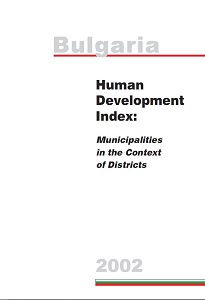
UNDP - HUMAN DEVELOPMENT REPORT 2002 – BULGARIA. Municipalities in the Context of Districts
Instead of an Abstract/Summary here, please refer to the Introduction PDF-file
More...We kindly inform you that, as long as the subject affiliation of our 300.000+ articles is in progress, you might get unsufficient or no results on your third level or second level search. In this case, please broaden your search criteria.

Instead of an Abstract/Summary here, please refer to the Introduction PDF-file
More...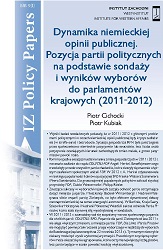
The results of the surveys conducted in 2011 and 2012 showed that the main political problems in the eyes of the German public were the debt crisis (in the eurozone) and unemployment. Despite the decline in enthusiasm for the direction of economic change, trust in Angela Merkel's CDU/CSU-FDP government was growing. The beneficiaries of this trend were primarily the Christian Democratic parties, which enjoyed much greater public trust than the FDP. In 2012, A. Merkel outpaced the leaders of the opposition SPD, Frank-Walter Steinmeier and Peer Steinbrück, in the popularity rankings. The two leaders of the FDP, Guido Westerwelle and Philipp Rösler, were among the least popular politicians. Parties that had previously received less support began to achieve significant successes in state elections. The people of Baden-Württemberg and Rhineland-Palatinate strongly supported the Green Party, which was the result of a dynamic internal debate on nuclear energy. In Berlin, Saarland, Schleswig-Holstein and North Rhine-Westphalia, the Pirate Party was successful and became a new force distinguished in the polls. At the same time, however, a gradual increase in public support for the large parties: CDU/CSU and SPD became noticeable.
More...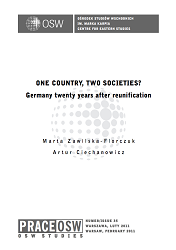
3 October 2010 marked the twentieth anniversary of the reunification of the two German states. This is an occasion for summing up and evaluating the changes which have taken place in Germany since 1990. Germany became reunited through the incorporation of the East German federal states to the then Federal Republic of Germany. The West German point of view is predominant in public discourse regarding this issue, which is manifested through grading the new federal states for their progress in assimilation to the western part of Germany. However, this way the positive changes which have taken place in the social, political and economic areas in the eastern federal states over the past two decades are often disregarded. This paper is an attempt to show the changes which have taken place in Germany, involving areas in which new federal states have outperformed the western part of the country.
More...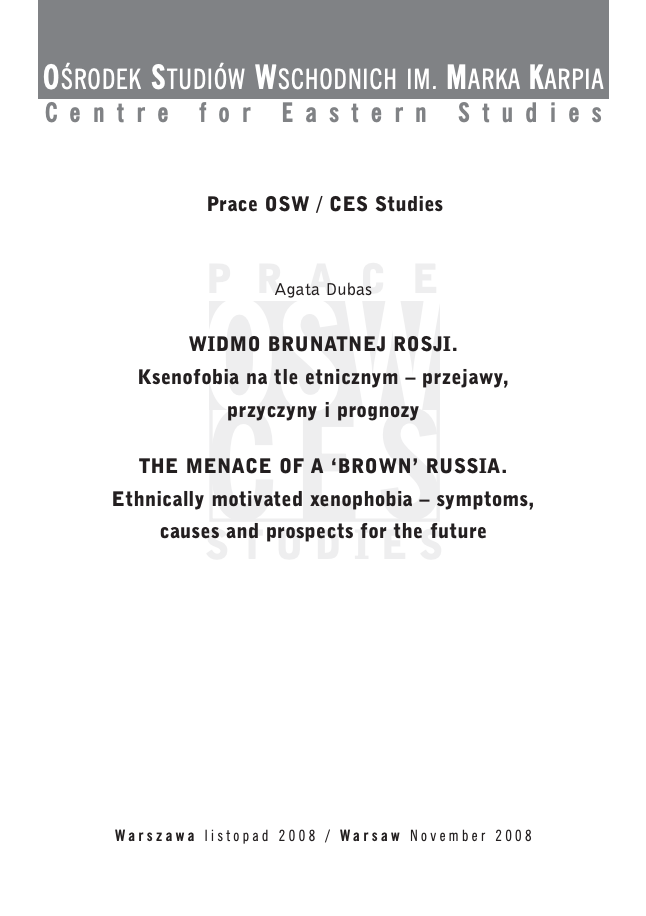
In late August and early September 2006, Kondopoga, a town of 40,000 inhabitants in Russia's Republic of Karelia, became the scene of ethnic riots. The pretext for the outbreak was one specific incident - a fight in a café between the local Russians and a group of Chechens and Azeris, in which two Russians were killed. Several days later, members of the nationalist organisation Movement Against Illegal Immigration arrived in the town and skilfullymanipulated public sentiments by organising rallies in which the demonstrators' demands included the expulsion of all Caucasian immigrants from the region. At night-time, property belonging to members of the Caucasian community was burned or destroyed. It was only several days later that the tense situation was calmed. This event soon took on a symbolic force and received a great deal of attention throughout Russia. For some, mainly Russian nationalists, Kondopoga became a 'hero city' and a harbinger of national revival, whereas for others, in particular human rights activists, it was a model example of the outbreak of openly chauvinistic sentiments among ethnic Russians. The events in Kondopoga, together with several other widely discussed incidents in 2006 (including the attack on 21 August in Moscow's Cherkizovskiy Market where most of the merchants were immigrants from Asia, and 10 people were killed and nearly 50 injured), put the problem of rising xenophobia in Russian society at the centre of attention. This paper focuses on the ethnic dimension of xenophobia, as understood as aversion, fear or hostility vis-a-vis members of other nationalities, as well as the related radical nationalist ideas founded on the concept of the dominant (and often discriminatory) role of the Russians in the Russian Federation, with reference to racism or neo-Nazism. This text primarily presents xenophobia as an enormous social problem in today's Russia, which is not being addressed at the moment, but is instead being exploited by both the authorities and radical nationalist groups. This paper attempts to describe and understand the causes of xenophobia and the reasons for the popularity of extremely nationalist views among ethnic Russians. It also seeks to estimate the scale of the problem and the potential threat it may create in the future. The first part describes the different manifestations of xenophobia in presentday Russia. It identifies the groups most exposed to ethnically motivated violence and persecution, as well as the most xenophobic communities, and discusses the scale of the problem and its specific characteristics in the context of Russian reality. The second part looks into the underlying causes of xenophobic sentiments among Russians, while the last chapters delve into the authorities' attitude towards the problem and seek to answer the question of whether radical nationalist ideas may in future come to dominate Russia's political scene.
More...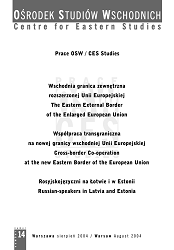
I. The new eastern border of the European Union // The European Union's new border with Eastern European countries, Russia, Belarus and Ukraine, is approximately 3000 km long. It has vital meaning for the Union in terms of security as well as for social and economic reasons. Unlike the southern maritime border of the EU, the eastern land border poses a number of different challenges. These pertain, above all, to issues of ''soft security'' (i.e. smuggling, illegal migration, organised crime, etc.), but also to the fact that all the most important communication and trade routes connecting Europe with Eurasia cross this boundary. // The borderline goes through areas inhabited by people of similar cultural and historical backgrounds, who are, in a way, socially and ethnically related. It therefore plays a much greater role in social terms than the southern border. The northern part of Estonian-Russian borderland on the Estonian side is mostly inhabited by Russians, and in the southern part on both sides by the Setu ethnic group. A Belarussian minority lives in the border regions of Latvia (the Daugavpils and Kraslava regions), Lithuania, and Poland (the area around Bialystok and Biala Podlaska). On the other hand, Poles live in the western part of Belarus (the Hrodna and Brest districts) and Ukraine (the Lviv district). In turn, Ukrainians live in eastern Slovakia. The Trans-Carpathian region of Ukraine is partly inhabited by Hungarians. The EU border also divides communities which used to live in one country in Soviet times and have preserved social ties (the Baltic States' borders with Russia and Belarus). A characteristic of the areas on both sides of the new EU eastern border is its peripheral nature. Mostly rural communities whose economic indicators are much worse than in the rest of the country, they are also undersubsidised regions, with substantially higher unemployment levels than the country average, and lacking large industrial centres (except for the cities of Narva, Hrodna, Brest, Bialystok, Lublin and Lviv). This peripheral character contributes to the development of cross-border contacts and mutual attraction, especially in business terms. Cross-border trade, both legal and illegal, is an important source of income for local inhabitants.
More...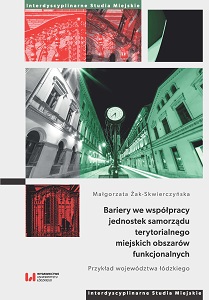
Representatives of science and practicians have for years been looking for ways to shape durable competitive advantages of the country's economy. Their goal has been to find out what actions taken under development policy lead to increasing the competitiveness of individual territories.The territorial and integrated approach to development is increasingly breaking through, which in practice has been reduced to functional areas, including urban functional areas, consisting of the central city and its surroundings, which is the area for the interactive spread of phenomena and processes occurring in the centre.Unfortunately, blockades within urban functional areas have a negative impact on building competitive advantages based on modern factors which rely on human and territorial capital.The publication discusses the cooperation of local government units in Łódź Voivodeship with various partners within urban functional areas, with particular regard to barriers which translate into joint actions for the development of cities and their surroundings.The assessment of the phenomena occurring in this area has made it possible to formulate recommendations for further intervention aimed at improving the cooperation.The results of the research undertaken show particular utility for social and economic development of various territories and can be a starting point for the formulation and implementation of solutions to build relationships between various entities participating in the development processes.
More...
The work attempts to analyse and interpret narrative aspects of language policy created and promoted by the Russian federal authorities since 1991. It exposes views on the Russian language, its status, condition, and relation to other languages, shared by the Russian key national representatives, especially by the Russian Federation president. Studying and characterising these views, the author seeks to answer what kind of world-view they include and what type of collective activity they suggest. He also focuses on how the current federal ideological schemes remain anchored in certain traditions of perceiving, defining, displaying, and managing language issues by the Russian state.
More...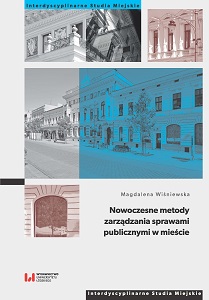
Cities are specific organizations that face particular challenges included both in management processes and management tools. The monograph is a compedium of modern methods of public affairs management in the city. The instruments presented are in line with the concept of public value, which enables efficient management in cities. The monograph may be a handy reference for teachers and scientists. Public management practitioners can also find it interesting. The author’s deliberations are partly instructional, which increases the value of the monograph from the point of view of city managers. The methods employed have been selected according to their modernity and appropriateness in the light of contemporary management conditions in cities.
More...
The study is a compendium of knowledge on the issues of general principles used in administrative enforcement proceedings. It refers both to the rules regulated in the enforcement act, as well as those resulting from other legal acts: the Constitution, the Code of Administrative Procedure, and acts of international law. In order to facilitate the understanding of the issues discussed, they are presented using calculations, exemplification and comparisons. The whole is enriched with reference to numerous court decisions.
More...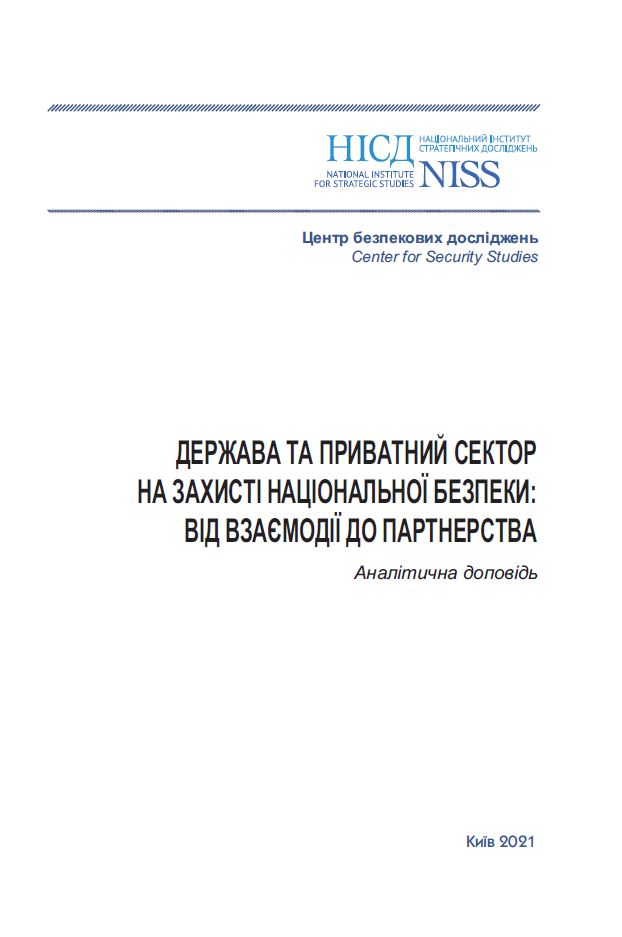
The research is devoted to the problems of forming an effective public-private partnership in the field of national security. Theoretical approaches to public-private partnership and their features in the security sphere are analyzed. The best world experience (USA, EU, Germany, Great Britain, Poland, Belgium and other countries) on building trust between the public and private sectors in the field of national security is studied. The normative-legal and organizational principles of public-private partnership in Ukraine are considered, effective examples of such interaction are given. Perspective directions of development of security public-private partnership in Ukraine and possible ways of their implementation are outlined. It is determined that the non-state (private) security sector should become an integral part of the national security system of Ukraine. // Designed for professionals engaged in theoretical and practical activities in the fields of national security and defense, public administration, private and corporate security, scientists, teachers, graduate students, doctoral students and students, as well as public (private) employees interested in current public issues -private partnership.
More...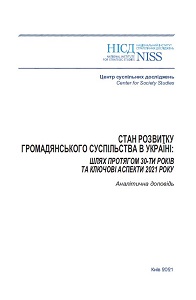
During the thirty years of independence, the civil society of Ukraine has overcome a considerable path of formation and development. From the youth movements, trade unions and political associations of the 1990s, it has transformed into an influential actor in key socio-political processes. // Active centers of civil society, organized and spontaneous, influenced the foreign and domestic political trajectory of Ukraine's development, warning against returning to the circle of post-Soviet countries with authoritarian regimes. There was widespread public resistance in 2004-2005, during the Orange Revolution. The end of 2013 and the beginning of 2014 were also marked by a high level of public activity. With the beginning of the Russian military aggression against Ukraine and its occupation of the Autonomous Republic of Crimea and Sevastopol and parts of Donetsk and Luhansk regions, the birth of a powerful volunteer, philanthropic and voluntary movement significantly expanded the influence of civil society on security. New movements and initiatives of citizens have radically changed the established landscape of civil society in Ukraine, and volunteer and veteran movements have become a powerful segment in the overall structure of civil society and actively interact with public authorities. The inviolability of Ukraine's foreign policy European and Euro-Atlantic prospects, the fundamental requirements of domestic political development (democracy, rule of law, free elections, etc.) is ensured, in particular, by the stability of the active segment of civil society.
More...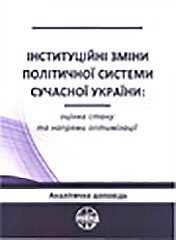
The analytical report analyses the institutional changes of the main components of the political system, which are the institutional subsystem and a kind of political matrix, that determines the functioning of the political system itself, such as: political parties, central government and the vertical of power in terms of an performance their formal and informal functions. On the basis of an assessment of their condition, the conclusions and recommendations aimed at the improvement of the political system of Ukraine are formulated.
More...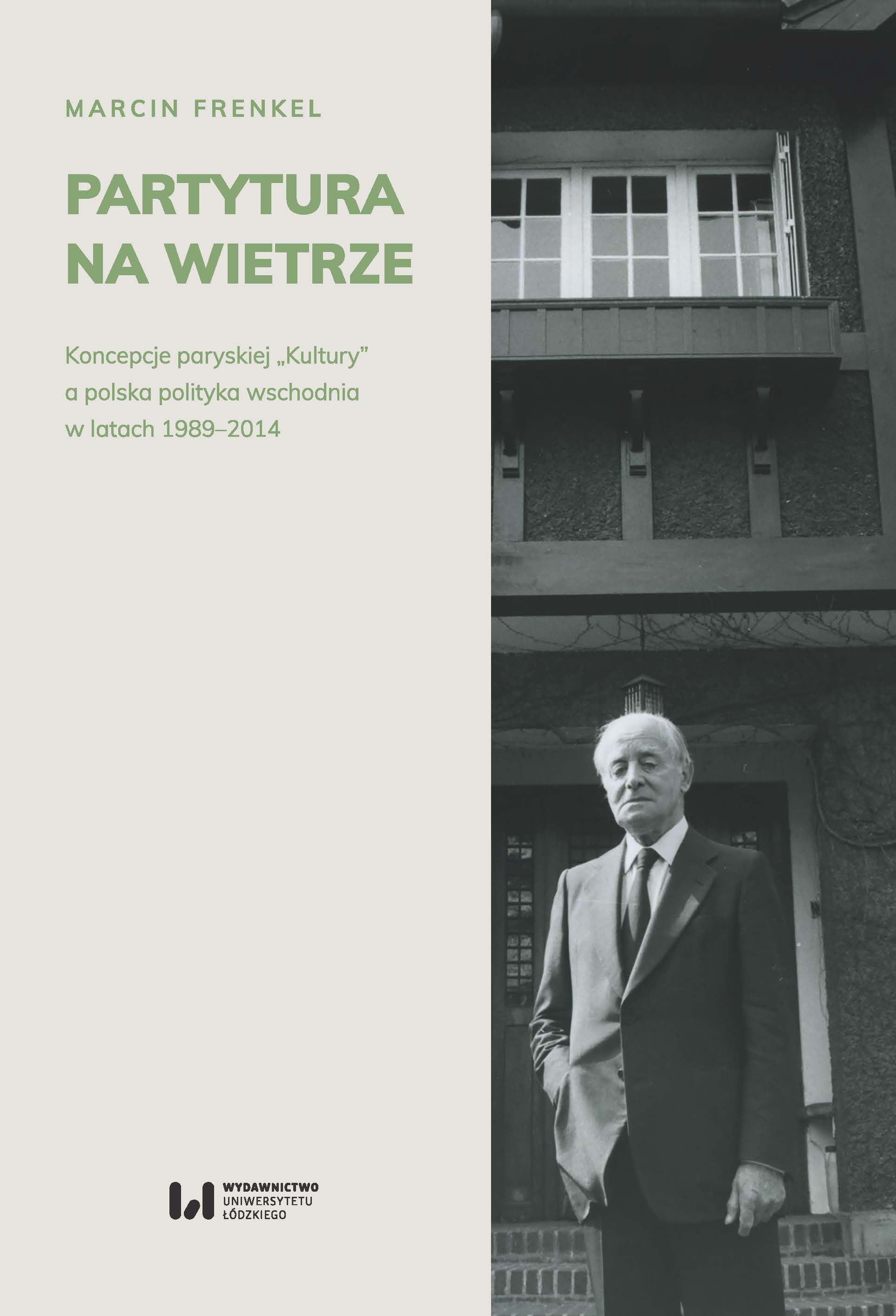
The book attempts to analyze the influence of the Parisian "Culture" magazine's (in Polish: Kultura) concepts on the Polish eastern policy from 1989 to 2014. "Kultura" was established in 1946 in Rome and soon after moved to Maisons-Laffitte, a small town in the suburbs of Paris. This magazine became the most influential Polish independent "think-tank" during the cold war era. This small group of intellectuals in exile, led by Jerzy Giedroyc, the editor-in-chief of the magazine, created a strategy - so-called "The Giedroyc Doctrine" - that later became a road map for all the successive Polish governments after the fall of communism in 1989. The "Giedroyc Doctrine" can be summarized in four crucial points: I ) supporting the independence and democratization of Ukraine, Lithuania and Belarus (ULB) and preserving post-war border lines in Europe; 2) counteracting soviet/Russian imperialism, ceasing Polish-Russian rivalry for ULB territories and creating good relations with Russian liberal/democratic parties and civic movements; 3) consolidating and rebuilding of good relations with Germany; 4) integrating Poland with political, economic and military organizations of the Euro-Atlantic world. It should be underlined that Russia has been the central point of reference for the whole idea. Recognition of the above points should neutralize the threat from Russian imperialism and build a solid foundation for Poland's future security. Analyzing the eastern policy of successive Polish governments in terms of continuing or departing from the concept of "Kultura", the author refers to the above-mentioned key postulates. The research results presented in the book prove that at the given time, all subsequent Polish governments took into account and accepted the "Giedroyc doctrine". Moreover, it should be stated that throughout the first twenty-five years of the Third Republic of Poland, its foreign policy was characterized by a high degree of continuity and attachment to the idea of the Parisian "Kultura". And this policy was the subject of cross-partisan consensus. On the other hand, at the detailed (tactical) level - going beyond the general concept of foreign policy - there were certain misunderstandings of Giedroyc's doctrine
More...
When we think about a certain phenomenon and attempt to value ourselves in relation to it, we often fall into the trap of self-evidence. Certain terms and phenomena appear self-evident to us, to the point where we accept them without question. This trap of self-evidence is especially pronounced when it comes to gender and sex. The awareness of these issues is reflected in the fact that socially, historically and culturally conditioned stratification of the individuals’ gender roles equates them with their sex. By knowing the sex determination of an individual we meet, come across or see, observed on a binary scale where there are only two (anti)podes - male or female, we believe that we know the gender, and thus the socially imposed gender role. As a collective, we define how a man, a woman, a boy, or a girl should behave based on these gender roles. We define their emotional characteristics, men’s and women’s appearance, manners and behaviour on various occasions based on these roles, often noticing only comparative differences between them. The deep-rooted recognition of these differences in the male-female dichotomy is frequently an impediment to accepting the possibility that these differences are sometimes interconnected, varied, and subject to change beyond sex conditioning. Overstepping these roles is perceived as excess, as a foreign, unknown, and thus unacceptable phenomenon. The reality, however, tells us otherwise. Observing gender and gender roles in such a simplified manner is unfounded and does not relate to the fact on which reality is constructed. In reality, gender roles are subject to change, interpretation, and different understandings rather than being immutable and assigned by external sources. There is a wide spectrum of gender identities between “man” and “woman”, all of which are as real and essential as they are, and which are a trait of a specific individual that deserves nothing less than acceptance and respect. Transgender persons express and experience their gender identity in a way that differs from traditionally conditioned ways. These individuals (self) identify as men, women, neither, both, or otherwise, and this identification is not based on their biologically assigned sex. Because of the disparity between biological sexual characteristics and their own gender perception, they feel the need to define their identity outside of the ascribed characteristics that gender brings. In some cases, such a definition of one’s own identity implies certain adjustments in terms of personal data. To define their identity in accordance with their feelings, a transgender person may be forced (or may desire) to alter (or change) their sex or name data through administrative procedures. Transgender persons in this segment, as in many others, often face prejudice, discrimination and non-acceptance. This negative attitude against transgender persons and their efforts to express their own gender and sex outside of conventionally and socially accepted patterns results in the denial of the possibility of their own conception of private and personal personality elements. It is, therefore, necessary to keep in mind that the question of gender and sex is ultimately a question of personality and, as such, is exclusively personal. When it comes to characteristics that are truly one’s own and not social, and to which these persons as individuals have a full right, which cannot be limited or denied by any arbitrariness that would stem from a sphere of fear of the unconventional, social constructs should not take precedence over any person’s right to self-determination. On the other hand, society has a positive commitment to transgender persons and any other person, to enable them (whether transgender or not) to enjoy the full spectrum of rights guaranteed by positive regulations and basic norms of civilization. This publication was prepared with the primary objective of providing basic information to public administration officers regarding the implementation of currently valid laws and bylaws in support of transgender persons’ rights and equality. Its goal is to serve as a resource for public administration officers to get more familiar with relevant legal solutions and best practices, which will be used in their work in cases of sex marker change in personal documents. Furthermore, the Handbook aims to improve the knowledge and capacity of BiH public administration representatives by providing clear guidelines and an effective model of legal recognition of gender identity, allowing them to perform best practices in terms of respecting the rights of transgender persons in sex reassignment procedures, with reference to good practices from the region and Europe.
More...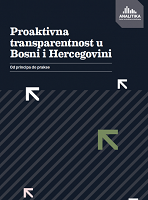
Transparentnost institucija vlasti i javnog sektora općenito jedan je od osnovnih postulata demokratskog društva, a temelji se na pretpostavci da informacije od javnog karaktera moraju biti dostupne, a građani informirani o radu institucija i odlukama koje se donose u njihovo ime. Transparentnost povećava odgovornost izabranih zvaničnika u obavljanju javnih funkcija, smanjuje prostor za korupciju i zloupotrebu vlasti, omogućuje građanima kontrolu rada vlasti i doprinosi donošenju kvalitetnijih odluka od javnog interesa. Pojam transparentnosti javnih institucija ima sada već dugu historiju i može se povezati sa uvođenjem prvog zakona o slobodi pristupa informacijama u Švedskoj 1766. godine. No, tek u drugoj polovici 20. stoljeća dolazi do intenzivnijeg razvoja zakonodavstva o pravu na pristup informacijama, kada su slične zakone postupno uvodile i druge države. S razvojem novih informacijsko-komunikacijskih tehnologija i nastankom interneta, dolazi do promjene u ostvarivanju prava na pristup informacijama, gdje se naglasak sve više stavlja na proaktivnu transparentnost institucija odnosno ideju da su javne institucije dužne samostalno, odnosno proaktivno, objavljivati na webu informacije koje se nalaze u njihovom posjedu, ne čekajući zahtjeve građana. Koncept proaktivne transparentnosti snažno je podržan kroz nekoliko značajnih multilateralnih inicijativa poput Partnerstva za otvorenu vlast, pokreta za otvorene podatke, a mnoge države, poput Velike Britanije, Sjedinjenih Američkih Država, te skandinavskih zemalja postale su predvodnice u toj oblasti. Međutim, Bosna i Hercegovina prilično zaostaje za savremenim trendovima u ovoj oblasti. Naime, u BiH, pravo na pristup informacijama u posjedu javnih institucija garantirano je Zakonom o slobodi pristupa informacijama (u daljem tekstu: ZOSPI), koji je na državnom nivou usvojen 2000. godine, a entitetskom 2001. godine. Zakon određuje da svako ima pravo uputiti zahtjev institucijama za pristup informacijama pod njihovom kontrolom, a da su javni organi u obavezi da objave takve informacije. Ali ovi zakoni ne obavezuju javne institucije da proaktivno objavljuju informacije i ne sadrže odredbe iz domena “otvorenih podataka” pa se slobodno može reći da su potpuno zastarjeli i više ne odgovaraju informacijsko-tehnološkom okruženju u kojem javne institucije djeluju, da zaostaju za pravnim standardima kada je riječ o sadržaju ZOSPI-a drugdje u svijetu, a i da su u suprotnosti sa navikama i očekivanjima građana kada je riječ o principima komunikacije, obimu, formi i sadržaju na internetu dostupnih informacija o javnim institucijama. Pored toga, postojeći zakonski okvir koji se odnosi na slobodan pristup informacijama, u neskladu je i sa nizom sektorskih zakona i politika, ali i praksi i inicijativa unutar javnih institucija na različitim nivoima vlasti, a koje u određenoj mjeri promiču principe i već primjenjuju neke mjere proaktivne transparentnosti. Najbolji primjeri za to, a koji će detaljno biti elaborirani u nastavku teksta, jesu naprimjer odredbe Zakona o javnim nabavkama BiH kojima se institucije obavezuju na objavu informacija u domenu javnih nabavki, ili naprimjer Preporuke za izradu i održavanje web prezentacije institucija Republike Srpske koje čak sadrže i odredbe o otvorenim podacima, kao i prije godinu dana izrađeni principi i smjernice proaktivne transparentnosti koje su usvojile i počele primjenjivati četiri institucije na nivou BiH. Upravo zbog velikog raskoraka koji postoji između ključnih zakona o slobodi pristupa informacijama u BiH i trendova u toj oblasti, kao i zbog neujednačenih politika i praksi unutar BiH, ova studija će nastojati ponuditi uvid u trenutno stanje kada je riječ o proaktivnom objavljivanju informacija javnih institucija, te identificirati ključne faktore koji utječu na razvoj proaktivne transparentnosti u BiH. Osnovna pitanja na koja će studija pokušati dati odgovor su: u kojoj mjeri zakonski okvir u BiH prati savremene trendove u domenu transparentnosti javnih institucija, koji njegovi aspekti bi se eventualno trebali unaprijediti i na koji način? U kojoj mjeri javne institucije u BiH ispunjavaju standarde proaktivne transparentnosti? I konačno, koji su to ključni faktori koji utječu na stepen razvoja proaktivne transparentnosti javnih institucija BiH, odnosno kako stvoriti povoljnije okruženje za razvoj proaktivne transparentnosti u BiH? Ovaj izvještaj rezultat je istraživanja koje je sprovedeno u periodu od marta do septembra 2016. godine, a sastojalo se od pregleda međunarodnih standarda i praksi, analize zakonskog okvira i relevantnih politika u BiH, intervjua sa predstavnicima javnih institucija na nivou BiH, te dva kruga analize web stranica javnih institucija na nivou BiH kako bi se utvrdio stepen njihove proaktivne transparentnosti. Prvi krug analize web stranica urađen je u maju 2016. godine i obuhvatio je 68 institucija na nivou BiH, a drugi krug je bio u septembru iste godine, a obuhvatio je web stranice 10 najbolje rangiranih institucija iz prvog kruga analiza web stranica. Kao osnov za analizu web stranica korišteni su “Standardi proaktivne transparentnosti u javnoj upravi u Bosni i Hercegovini” o kojima će više biti riječi u četvrtom poglavlju ove studije. Nakon provedene analize o dostupnosti informacija na web stranicama, obavljeni su intervjui sa predstavnicima javnih institucija kako bi se identificirali faktori koji doprinose ili pak ograničavaju proaktivnu transparentnost u BiH, te dobila sveobuhvatna slika o praksama, različitim pristupima, ograničenjima i izazovima kada je u pitanju transparentnost institucija. Kako bi ponudio odgovore na definirana istraživačka pitanja, izvještaj najprije predstavlja osnovni koncept, a zatim i međunarodne standarde i dobre prakse proaktivne transparentnosti u komparativnoj perspektivi. Nakon toga, slijedi pregled i analiza zakonskog okvira, politika i praksi proaktivne transparentnosti u BiH općenito. Četvrto poglavlje predstavlja rezultate empirijskog istraživanja koje smo proveli za potrebe ove studije, a koje uključuje podatke o dostupnosti informacija na web stranicama institucija na nivou BiH, te analizu rezultata dobivenih iz intervjua i drugih relevantnih sekundarnih izvora. Na kraju, ponuđen je sažet pregled zaključaka istraživanja kao i niz preporuka za unapređenje ukupnog stepena proaktivne transparentnosti javnih institucija u BiH.
More...
The very book contains a deepened theoretical analysis of the legal organizationof the public organization. The authors do not only present normativesolutions, which happens in books to be found on the publishing market fromtime to time, but thoroughly analyse these solutions, making justified criticalcomments at the same time. What should also be underlined is the fact that thevery perspective allows for tracing legal changes concerning the organizationand functioning of the public administration, pointing to the standards derivingfrom the rules of a democratic country of the law.What is very accurate is the fact that the what the authors considered essentialwas a presentation of subsequent stages determined by the system reformsin the country, that is, changes in the system of the territorial self-government, alegal separation of the departments of the government administration that gavethe possibility of precisely defining the scope of the government administrationand consolidating a legal position of the prime minister or changes in the legalstatus of a voivode and local bodies of the government administration.According to the authors of a new system construction, a new shape of thepublic administration in the field in the government part was to above all guaranteekeeping safety, peace, and public order, for which responsibility in the lightof new law regulations in this respect, is held by a voivode as a head of unitedservices, guard and inspection, being liable for the result of their actions.The public administration is exercised not only by the country, but alsopublic and legal unions, as well as other subjects of administration. It should betreated as a whole from the legal, organizational and functional point of view.The book, due to the originality of its contents within the scope of the legalorganization of the public administration may appear incredibly useful for boththeoreticians and employers of a broadly-understood administration, as well asstudents whose teaching programmes cover the aspects of the system of thepublic administration.
More...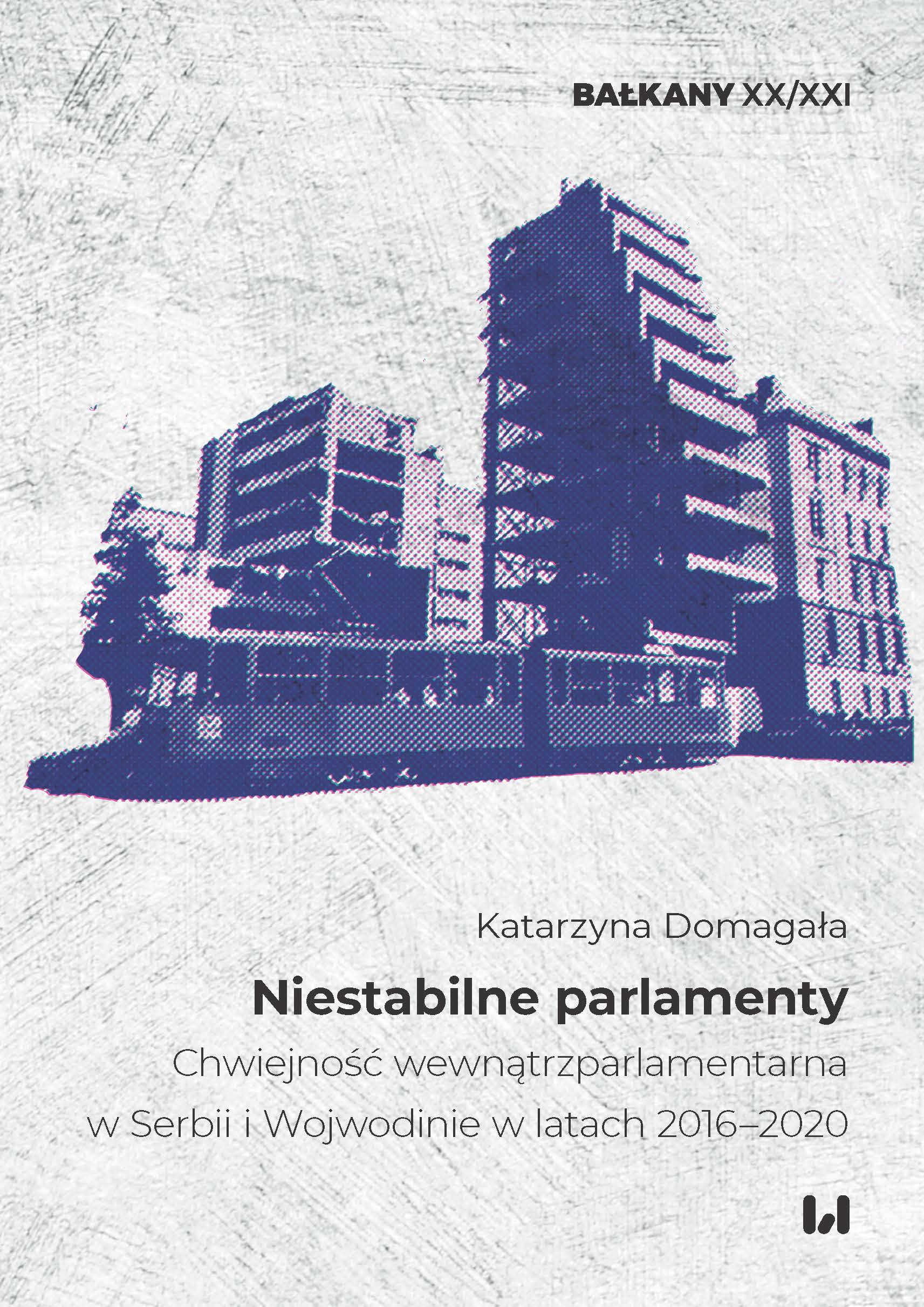
The main aim of the research was to analyze the genesis of the scale and the dynamics of the volatility in the exercise of the mandate of a deputy to the National Assembly of the Republic of Serbia and the Assembly of the Autonomous Province of Vojvodina. I chose national and regional parliaments for analysis to find out to what extent volatlity in the performance of deputies’ mandates interfere in Serbia on these two levels (in other words: how often regional deputies "cross" to the national parliament – and vice versa). Analyzing the intraparliamentary volatility on the personal level, I decided to examine both party-switching and replacement. I tried to refer the findings of the researchers - focused on the systems of consolidated democracy and parliaments at the national level - to the case of unconsolidated democracy and parliaments at various levels: central and regional. An additional goal of the study was to trace the dynamics in the evolution of the party systems in Serbia and Vojvodina, in order to show that in fact these systems remain fragmented and extremely polarized, which is important for the scale and dynamics of the volatility in the exercise of deputies’ mandates.
More...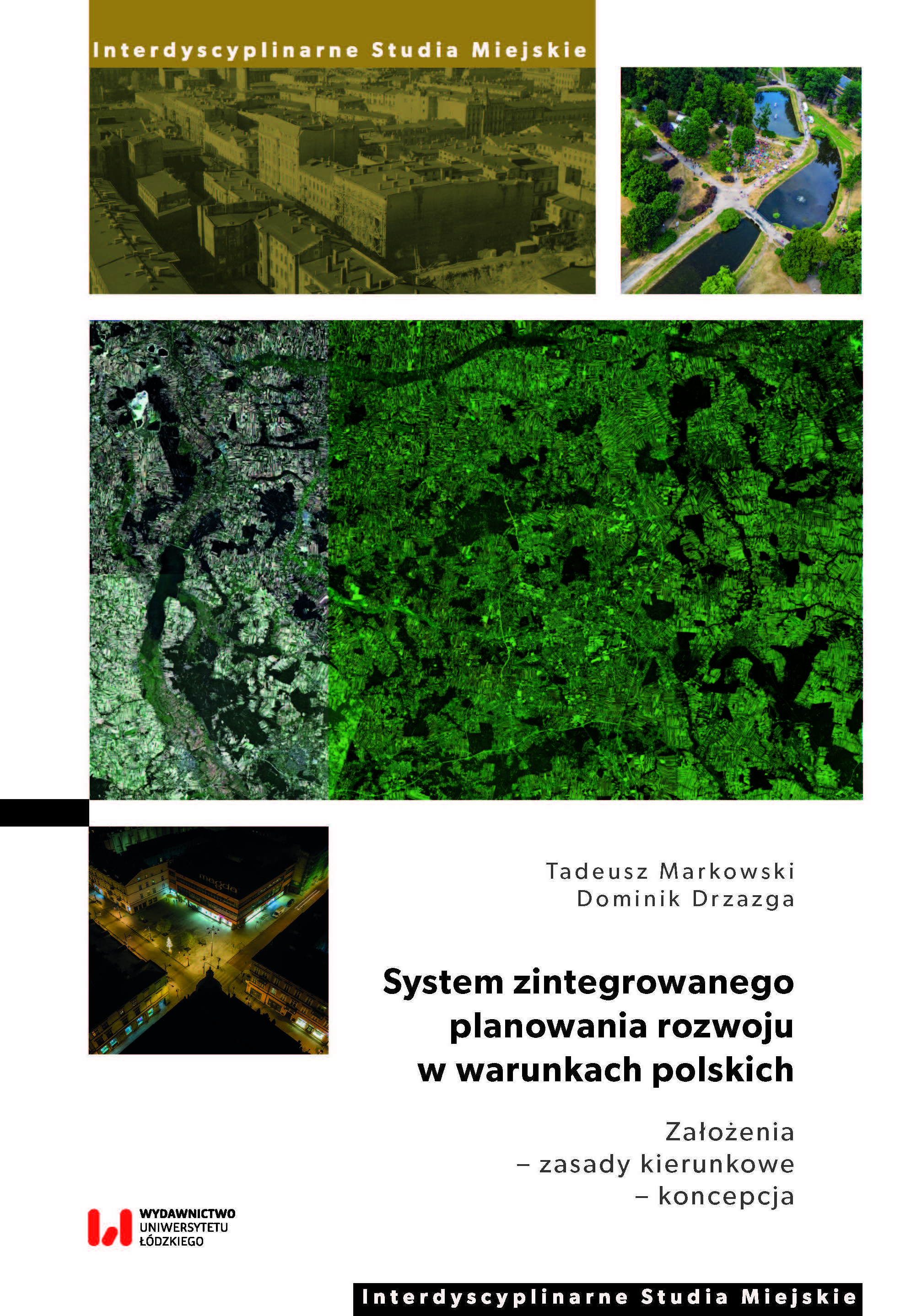
This scientific work deals with the issues of integration of spatial planning and development planning, in the context of the recomendations to introduce systemic reforms in Poland to improve the procedures for development management by the central and local government public administration. The basis for the development of the author's concept of system solutions in the field of integrated planning were literature studies in the field of economics development issues, public management, planning, spatial management and urban planning, as well as political philosophy and a specially organized series of seminars and scientific debates among experts dealing with the theory and practice of planning, as well as the authors' own experience resulting from the research projects and scientific expert work on national, regional and local strategic documents. The thesis has been divided into two parts, the first of which is entitled: "Theoretical foundations and formal premises of integrated development planning", and the second: "The concept of an integrated development planning system". Part I. consists of chapters 1-8, which discuss the axiological and political foundations of planning, the issue of public interest in planning, contemporary civilization conditions determining the urban planning doctrine, development of planning methods and techniques, issues of flexibility in planning as an instrument of public intervention to solve market failure, the sustainable development paradigm and government administration initiatives undertaken since 1989 to reform the development and spatial planning system. Part II. of this thesis consists of chapters 9-14, in which the general assumptions of the recommended changes are discussed, and then a detailed description of the new types of planning and strategic documents postulated for introduction into the planning system at all levels of the country's territorial division is made. The next part of the work discusses the role and possible organization of public planning offices, general principles of social participation in planning, as well as the initial conditions and transitional solutions related to the introduction of the recommended integrated planning system.
More...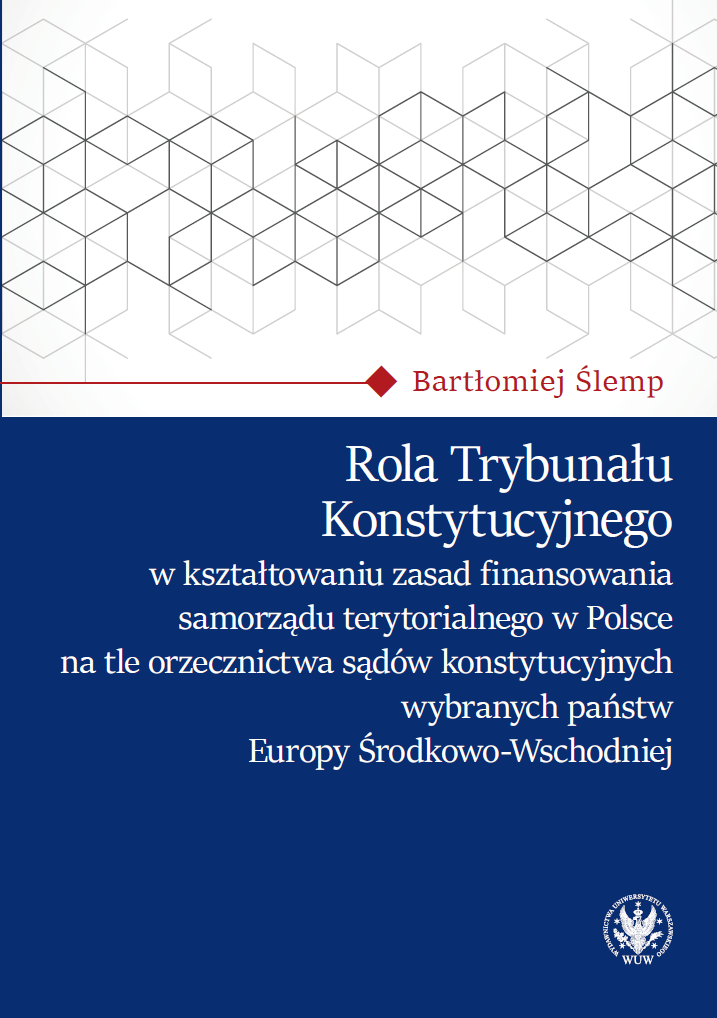
The author of the monograph discusses the jurisprudence of constitutional courts of selected countries of Central and Eastern Europe: the Republic of Poland, the Republic of Lithuania, the Czech Republic, the Slovak Republic and the Republic of Croatia. He also undertakes an assessment of its impact on the formation of basic (constitutional) principles of financing local governments: the principle of financial independence and adequacy of the activities of local government units and the guarantees resulting from them. Particular attention is paid to the discussion of the role of constitutional courts in determining acceptable conditions for limiting the rules in question, the reasons for breaching the rules and the criteria used by courts to determine them.
More...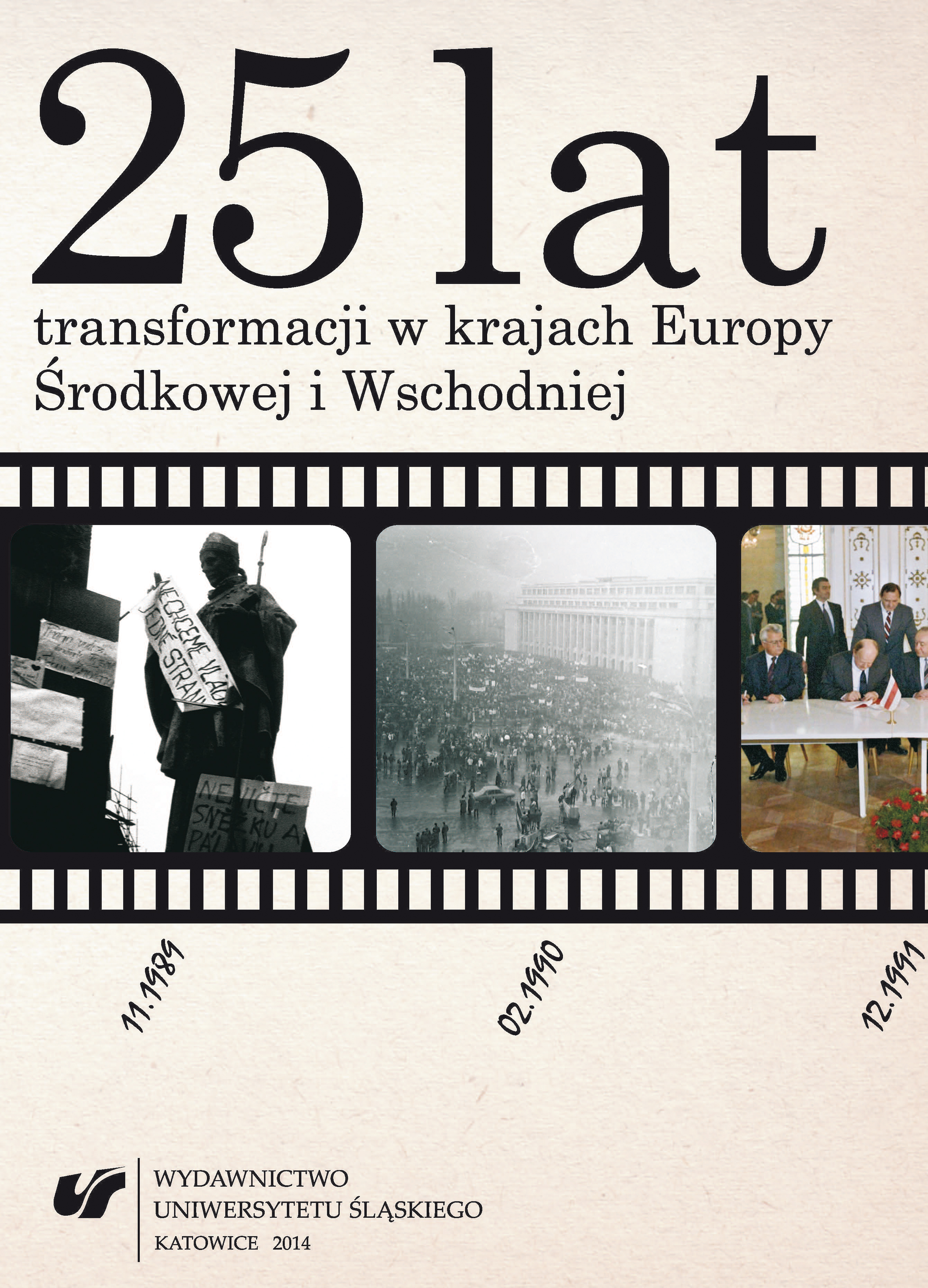
Każda rocznica związana z procesem zmian systemowych w krajach Europy Środkowej i Wschodniej jest doskonałą okazją do zbilansowania przekształceń demokratycznych i oszacowania naszych perspektyw. Badaczy niepokoją jednak braki terminologiczne, a właściwie ich bogactwo. Definicji transformacji jest bowiem prawie tyle, ilu jest tranzytologów. Mało też ukazało się dotychczas publikacji naukowych dotyczących tendencji odwrotnych lub ograniczających demokratyzację, które bezsprzecznie mają miejsce w krajach posocjalistycznych. Odwracamy od nich wzrok, łudząc się, że zmiany konstytucyjne, instytucjonalne i wolny rynek rozwiążą wszelkie nasze problemy. Uproszczenia powodują, że wciąż trwa spór o początek transformacji i jej zakończenie. Autorzy starają się część tych „białych plam” uzupełnić. Waga tego problemu jest wszak o tyle duża, bowiem proces transformacji jest wciąż niedokończony.W pracy poruszane są tematy badawcze: Demokracja, jako forma sprawowania władzy – zarys problematyki (Kuba Przewoźnik); Stan demokracji samorządowej w Polsce. Jej stan i perspektywy (Marek Barański); Ewaluacja samorządu lokalnego w Polsce w okresie transformacji (Mariusz Dyduch); Koalicja wyborcza jako platforma gwarantująca sukcesy wyborcze na przykładzie wyborów parlamentarnych w latach 1991–2011 w Polsce (Marek Tyrał); Program Rozwoju Subregionu Południowego na lata 2007–2013 jako narzędzie prowadzenia polityki rozwoju w województwie śląskim (Magdalena Goryczko); Kształtowanie się kategorii rodzin partyjnych w Czechach, Polsce, Słowacji i Węgrzech w perspektywie 25 lat demokratyzacji (Sebastian Kubas); 25 lat procesu transformacji samorządu lokalnego w Federacji Rosyjskiej (Barbara Porębska-Maciołek); Geneza i postęp partii politycznych na Ukrainie oraz Polsce: od eksperymentu komunistycznego do okresu reform demokratycznych (Natalia Rudakiewicz); Ukraińska droga do demokracji. Pierwsza dekada budowy niepodległej Ukrainy (Dawid Kania); Próby rozwiązania kryzysu kosowskiego przez mocarstwa zachodnie i Rosję w okresie tranzycji Republiki Serbii w latach 1998–1999 (Jerzy Wiśniewski); Badania i analizy o transformacji. Problematyka środkowo i wschodnioeuropejska wybranych francuskich think tanków (Mateusz Hudzikowski).
More...